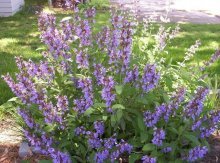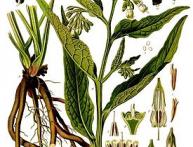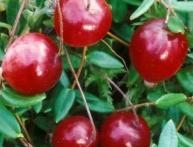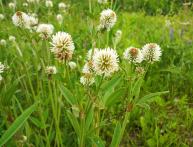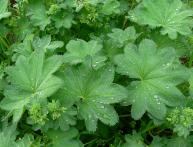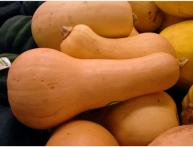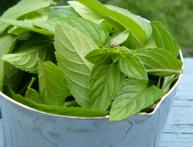Meadow sage gives way to Salvia officinalis

Meadow sage is common in our forest-steppe zones, but this type of sage is in many ways inferior to medicinal sage (although it is used in folk medicine), which can be grown in gardens and then used for various purposes. That is why you should not collect meadow sage, especially since you can make a mistake and harm your health; it is better to plant a beautiful and useful subshrub in the garden - medicinal sage.
Salvia officinalis blooms in June-July, and in the fruiting phase, more essential oil accumulates in the plant, but there are more tannins in the fall. Sage leaves contain up to two and a half percent essential oil, the components of which are borneol, cineole, camphor, alcohols, triterpene acids and tannins.
Planting and collecting sage
It is better for sage to choose a sunny place where there is loamy or loose sandy loam soil. Sage tolerates drought well, but requires watering in too dry weather and especially after cutting. It can be damaged by frost; if the winter is well tolerated, sage can “live” in one place for many years. In order for the wintering of sage to be successful, you need to cut it down to a “stump” in the fall and sprinkle it with compost.
Sage seeds can be sown either in early spring or, better yet, at the end of October, that is, for the winter, directly into open ground, the sowing depth is about one and a half centimeters.You can grow sage through seedlings, on which the seeds are sown at the end of February, the seedlings appear after three weeks, a little later they need to be planted into individual pots. Seedlings are planted in open ground when there is no risk of frost returning, maintaining 25 centimeters between plants.
It is better to start cutting sage shoots for later use for medicinal and culinary purposes from the moment the plant blooms and can be cut before the end of October. It is better to cut off the inflorescences and leaves so that fifteen centimeters remain from the ground. Next, the sections are placed in a ventilated but dark room, where the temperature does not rise above 35 degrees. The product can be stored for no more than one and a half years.
Uses of sage
Sage has anti-inflammatory, hemostatic, antimicrobial, restorative properties, it helps to activate the secretion of the gastrointestinal tract, the secretion of gastric juice, and reduces sweating. Due to its properties, sage is used in the treatment of the gastrointestinal tract, kidneys, liver, viral diseases, bronchitis, sore throat, mumps, radiculitis, gingivitis, neuritis and polyarthritis and many other diseases.
Sage leaves are used in the food industry; they season salads, soups, meat, fish, vegetables, poultry, sweet dishes, and are also used as a flavoring for tea and tobacco.
Sage is made from:
- strong decoctions for rinsing the mouth for problems in the oral cavity, for lotions for rheumatism, skin lesions, ulcers, wounds, for rinsing hair to strengthen it;
- sage infusions They are used internally to treat many diseases, but self-medication with sage is contraindicated; consultation with a doctor is required.


